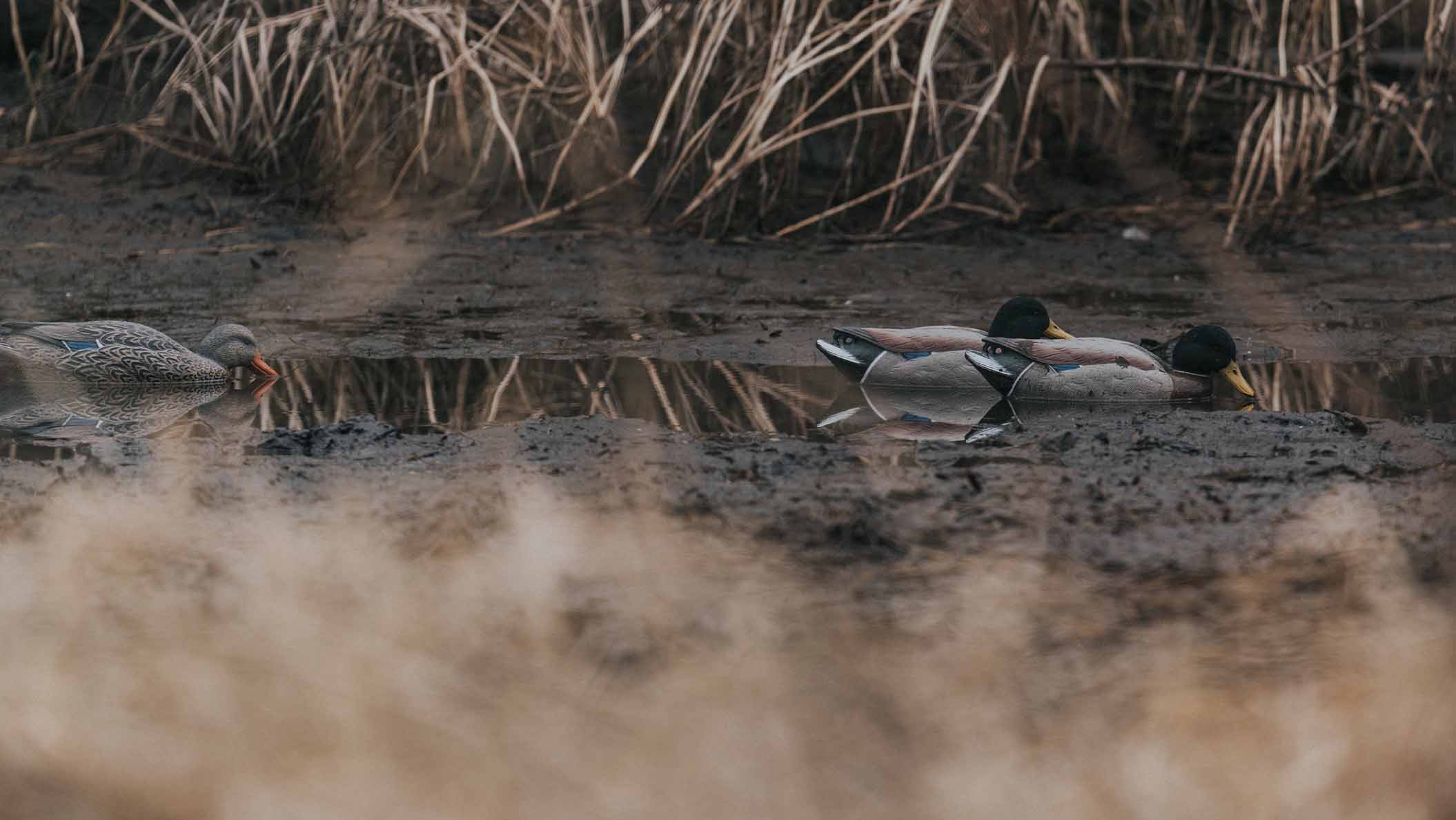
How To Decoy Pressured Birds
After the first few weeks of the season, all the way to the last day, the wariness of ducks grows significantly. No haphazard effort or loose attention to detail is going to put birds in your spread. Here are some strategies to pull more ducks into your spread.

1. THROW THE SPINNER AWAY
No, we’re not literally saying to throw your spinners away. In fact, quite the opposite. If it meets regulations, always have it with you, but don’t be afraid to ditch that spinner if the birds aren’t finishing.
This may go against every fiber of your being as a waterfowler but keep an open mind and give it a try. Some states don’t allow spinners until later in the season, but regardless, think about how many white flashing objects that group of pintails sees from 500 feet in the air. Every Tom, Dick, and Harry has 1-3 in their spread. Be different, look different, and you’ll see it pay off often.

2. SMALLER SPREAD = BIG OPPORTUNITY
Every decoy and the kitchen sink in your spread, although it has it’s place, is not the answer to every hunt in the marsh. As the season progresses, the birds begin to pair up and like to find those more secluded spots with less birds. At times, you’ll find that going out with 6-12 decoys works wonders, and you’ll question yourself why you haven’t tried this sooner.

3. MOTION IS CRUCIAL
What looks more realistic: 15 dozen decoys on glassy water, or 3 mallard decoys splashing on a jerk rig? If we’re honest with ourselves, we’ll say the latter. There are lots of options on the market now for motion. Splashers, kickers, swimmers, jerk rigs, automatic pullers, and so on and so forth.
Have you ever heard the saying, “Less is More” the advantage of going with motion decoys on those calm windless days is that you can take less and be more successful and save your back in the process.

4. IT’S ALL ABOUT THE COOTS
When December and January roll around, what is every hunter’s pond overly saturated with? That’s right, those pesky, noisy, what feels like 1,000 coots. That’s not a bad thing though. What do you see amongst that sea of coots? Ducks, Lots of Ducks. Now we’re not saying go and buy 10 dozen coot decoys, but having what many refer to as confidence decoys does work.
Another option is a few honker floaters amongst your spread, which brings a different look than your competition and more visibility from the air. If you really want to be different, many have found success in using Swan decoys. Give it a shot; it just might be the edge you didn’t know you needed.

5. DON’T OVERCALL
From Canada all the way south to the wintering grounds of every Flyway, ducks have heard every call known to man a million times. Being subtle in your approach to calling, late in the season, can be just enough to coax those birds into a feet-down approach in your decoys.
Aggressive-style calling in the blind can have its place, but there are also times when soft, finesse-style calling will work wonders. Learning to read the reaction of the birds and know what they like is more important than just always going out with the mindset of calling until your lungs collapse.

CONCLUSION
Every duck hunter has experienced the frustration of witnessing a sky full of ducks without luring any to their spread. Consider unconventional strategies that set you apart from everyone else. Try what no-one else is trying and get results no-one else is getting.
SHOP THE GEAR
Explore some of the products featured in the article.







